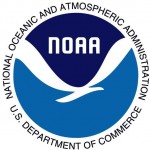Cooperative research provides new data for ESA-listed rockfish in Puget Sound, WA
The primary goals of this research program is to collect new data capable of answering questions related to the recovery of rockfish (Sebastes spp.) listed as threatened or endangered under the Endangered Species Act (ESA) in the Puget Sound, WA region (PS) and to broadly form working relationships with user and stakeholder groups (recreational fishing and SCUBA diving communities) within PS in order to develop recovery actions that will lead to the recovery and sustainability of these populations. The knowledge and expertise of these groups have allowed us to collect new data on the life-history characteristics, population abundance, fisheries interactions and genetic structure of ESA-listed rockfish in PS across several research projects. These new data have led to the re-drawing of population boundaries for yelloweye rockfish (S. ruberrimus) and the removal of canary rockfish (S. pinniger) from the endangered species list.
Project URL: https://www.westcoast.fisheries.noaa.gov/protected_species/rockfish/rockfish_in_puget_sound.html
Geographic Scope: Puget Sound, WA
Project Status: Active - recruiting volunteers
Participation Tasks: Site selection and/or description, Specimen/sample collection,
Start Date: 4/14/2014
Project Contact: kelly.andrews@noaa.gov
Federal Government Sponsor:

Other Federal Government Sponsor:
Fields of Science: Animals, Biology, Ecology and environment, Education, Nature and outdoors, Ocean/water and marine, Science policy
Intended Outcomes: The primary goals of this research program is to collect new data capable of answering questions related to the recovery of rockfish (Sebastes spp.) listed as threatened or endangered under the Endangered Species Act (ESA) in the Puget Sound, WA region (PS) and to broadly form working relationships with user and stakeholder groups (recreational fishing and SCUBA diving communities) within PS in order to develop recovery actions that will lead to the recovery and sustainability of these populations.

